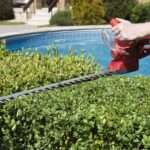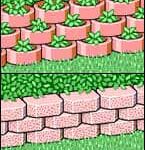This expert DIY guide will teach you how to choose, plant, and care for shrubs to keep them healthy and beautiful.
Shrubs are versatile. They can hide in the background while masking a home’s foundation, serve as a backdrop for showy perennials, or take center stage in a garden bed.
They come in a vast variety of sizes, colors, and shapes—and some welcome the pruning that can turn them into stylized forms.
They may remain permanently on view, or die back in the winter only to return with the warmer weather.
Whatever form they take, shrubs play a prominent role in any garden design and should be chosen with care. In addition to checking sun and watering requirements, you’ll need to take into consideration each plant’s final size, form, and look, and determine its purpose in the landscape. Fortunately, there are so many shrubs to choose from, you’re sure to find just the right ones for your yard.
Sizes of Shrubs
You can find shrubs in all sizes, from a dwarf heath (Erica) that may only reach 6 inches high to a 20-foot-tall bottlebrush (Callistemon). Since most shrub purchases are made when the plant is still relatively small, be sure you know the plant’s predicted size (both in height and width) so that you will have sufficient room for it.
While shrubs can be pruned to keep them in-bounds, it’s a labor-intensive process that isn’t always a success. Plants do best if allowed to grow naturally, with pruning done just to keep them healthy and enhance their natural shape.
The exceptions to this rule are the plants that are often used for formal hedges. These plants do fine with more rigorous pruning; in fact, they often look best pruned rather than left to grow naturally. One of the most popular plants for hedges is the boxwood (Buxus), but any number of other choices will also work.
Shapes of Shrubs
Some shrubs form compact, rounded balls, such as the mountain pieris (Pieris floribunda); others, such as the butterfly bush (Buddleja davidii), may be more loose and sprawling; still others may be more vertical, like some junipers (Juniperus). These distinct shapes can create a strong visual presence in your landscape, so place them with care.
Shrub Colors
Choose any color on the color wheel and you’ll likely find a shrub that will match it. When you think of colorful plants, flowering shrubs may be the first things that come to mind. But you can also find shrubs with colorful foliage and berries.
Roses are probably the most well known of the flowering shrubs, but you’ll find plenty of other shrubs that will provide color throughout the year, from lilacs in the spring to hydrangeas in summer and fall to forsythias for winter and early-spring bloom.
Shrubs that add color to the garden with their foliage include the yellow-spotted leaves of the gold dust plant (Aucuba japonica“Variegata”), the blues and greens of different hostas, the purple foliage of the aptly named purple hop bush (Dodonaea viscosa “Purpurea”), and the variegations of color on the leaves of the “Emerald ‘n Gold” euonymus (Euonymus fortunei).
Tips for Buying Shrubs
Given a good start, shrubs are reasonably hardy. You’ll find them sold three ways: as bare-root plants; with a ball of soil around the roots, which is then wrapped in a burlap or synthetic mesh (known as balled-and-bur lapped or b-and-b); or in containers. The former two are usually sold in late fall and early spring; plant these as soon as you buy them.
Keep in mind that while the combination of roots and soil that form the balls of balled-and-burlapped plants can be heavy, the roots themselves are still delicate. Handle these plants with care when moving them.
Container plants can be put out at any time the ground can be worked, but try to avoid planting during the heat of the day or during a hot spell to avoid stressing the plant.
Choose plants with strong stems and good root systems. For balled-and burlapped plants, whose roots are not visible, be sure the roots are not exposed and the root ball is firm and moist. Container plants should not be root-bound nor should they be too leggy.
How to Plant Shrubs
No matter what type of shrub you’re planting, start with a hole that is twice the width of the plant’s roots and slightly shallower than the root system. Taper the sides of the hole outward slightly at the bottom and then dig deeper around the edges at the bottom of the hole to allow room for the roots to grow downward and to prevent the soil from settling. Shape the soil in the center of the hole into a rounded cone, which will serve as a base for the plant.
Soak a bare-root plant in water for four hours before planting. Situate the plant so the top of the root ball is slightly above the surrounding soil. Spread the roots over and down the cone. Holding the plant in place, start filling in the hole with the soil you removed. Firm the soil in place as you fill in the hole. When the soil is about 4 inches from the top of the hole, add water to settle the soil in place. If the plant starts to settle, add more soil under it until it is again at proper height above the soil. Finish filling in with soil and then water again. But don’t overwater; the soil should be moist but not soggy.
For a balled-and-burlapped plant, the top of the root ball should be about 2 inches above the soil line. If the covering is burlap, untie the top, pull the burlap about halfway down the root ball, and leave it in place. If the covering is synthetic, remove it completely. Fill the hole with soil, firming it as you go, until you are about 4 inches from the top of the hole. Moisten the soil, and add more soil beneath the plant if it has settled. Continue filling the hole, firming the soil; when you’re finished, moisten the soil until it is thoroughly wet but not soaking.
If planting from a container, gently remove the plant; you may need to tap on the bottom of the container to loosen the root ball. Place the plant on the cone so the root ball is slightly above the surrounding soil. Spread the roots out around the cone and fill in the hole with soil, firming it as you go. Once you’ve finished filling in the hole, water the plant until the soil is moist but not soggy.
Watering shrubs. Once your shrub is planted, keep the soil moist as the plant settles in. During the growing season, form a berm of soil around the planting area to create a watering basin. Water newly planted shrubs when the soil is dry to 2 inches deep. Once a plant is established, water only as needed. Many shrubs won’t need any supplemental watering.
Fertilizing Shrubs
Every shrub has its own nutrient needs. Some, especially the flowering ones, may benefit from an annual application of fertilizer. Others may do fine with the nutrients from the soil they’re in. If a plant looks weak and leaf color is pale, then adding an appropriate fertilizer may be a good idea.
How to Prune Hedges & Shrubs
Every shrub has its own pruning needs, but there are some rules that hold true for all shrubs. Removing damaged or dead branches, cutting out branches that have become too thick, and eliminating branches that detract from the overall look of the plant are all reasons to prune. You may also want to prune to keep flower production high or to create a specific look, such as an espalier or a rounded form.
When you prune is of equal importance. Deciduous non-flowering shrubs can be pruned in late winter and early spring, after the danger of frost has passed but before new growth has begun.
You can also prune these plants in mid-summer, to remove excess growth, suckers, and water sprouts. Broad-leafed, non-flowering evergreen shrubs can be pruned in late winter and early spring as well, but they also will do fine if pruned in summer.
Conifers seldom require pruning, but if they do, prune whorl-type conifers such as fir, spruce, and most pines in early spring, cutting new shoots back by about half to a point just above a growth bud. Prune random-branching conifers such as cedar and juniper in late winter or early spring right before growth begins, making sure that the cut branches have some foliage.
Flowering shrubs are fussier about when to prune. If plants bear flowers on wood that grew during the previous year, prune them just after they finish blooming. If plants produce flowers on the current season’s growth, though, prune them in late winter. To be sure, double-check with a reliable resource on a particular plant’s pruning requirements.
Caring for Shrubs
Because every shrub has different care needs, you’ll need to check with your local nursery for exact watering and feeding needs. For all plants, though, consider installing a drip irrigation system or watering basins to encourage direct watering to the roots. Adding mulches will help retain moisture and discourage weeds.
Flowering plants usually benefit from an annual application of fertilizer. However, if a plant looks weak and leaf color is pale, fertilizing is called for. Apply a complete fertilizer.
Pests and diseases may also be a concern, although most plants used for hedges are fairly resistant. If you notice the start of a problem, use non-toxic solutions, such as increasing watering and fertilizing, keeping the garden clean, and using insecticidal soaps and biological controls. If you take care of the problem when it first starts, it will usually not increase.



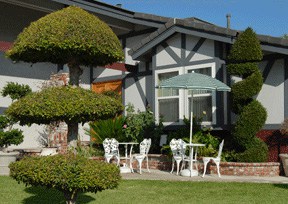
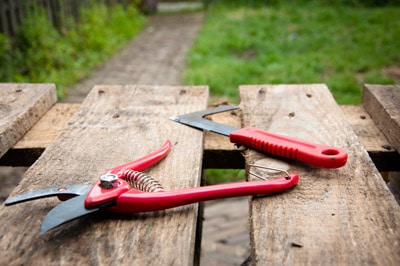
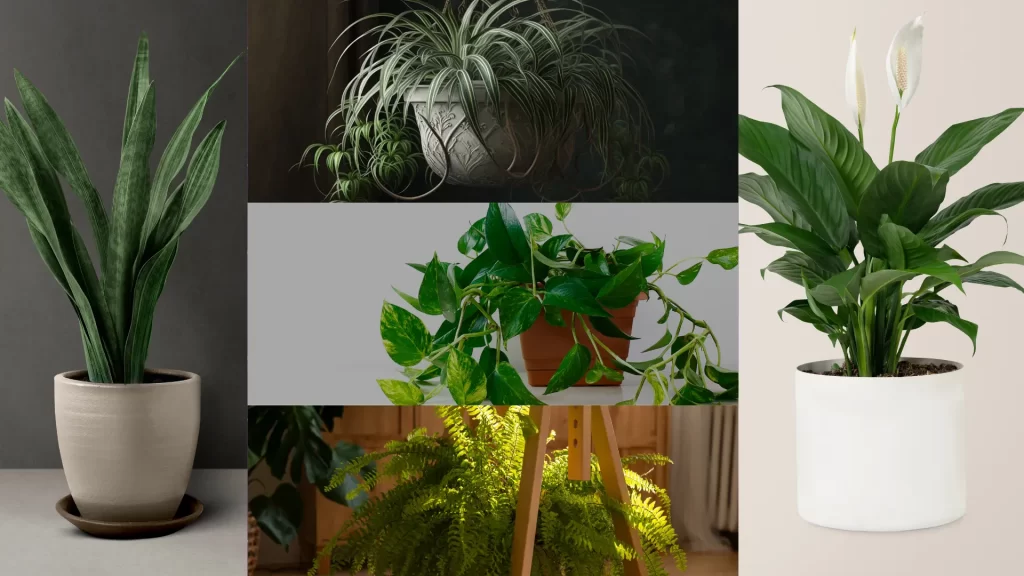

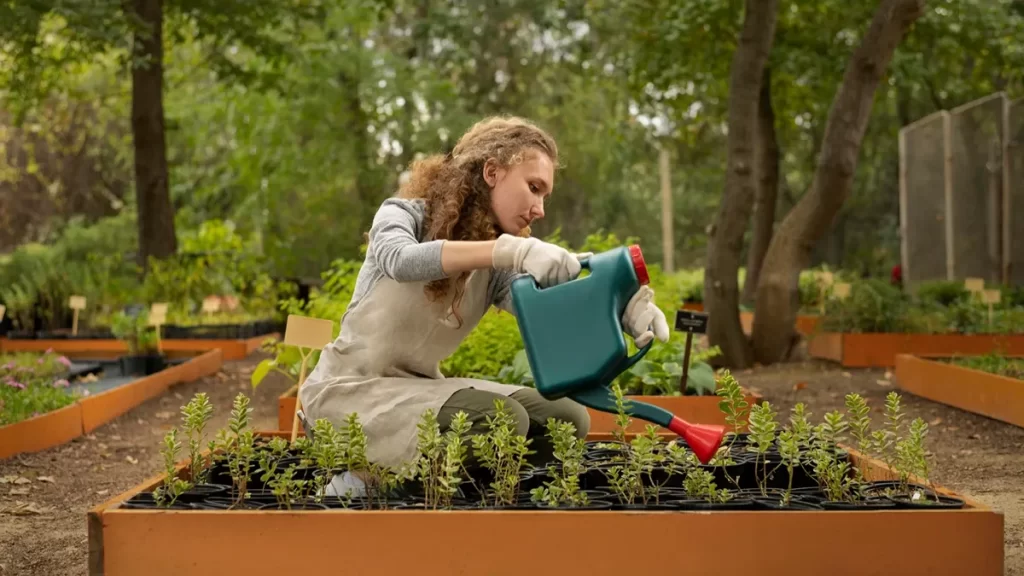

 Don Vandervort writes or edits every article at HomeTips. Don has:
Don Vandervort writes or edits every article at HomeTips. Don has:


